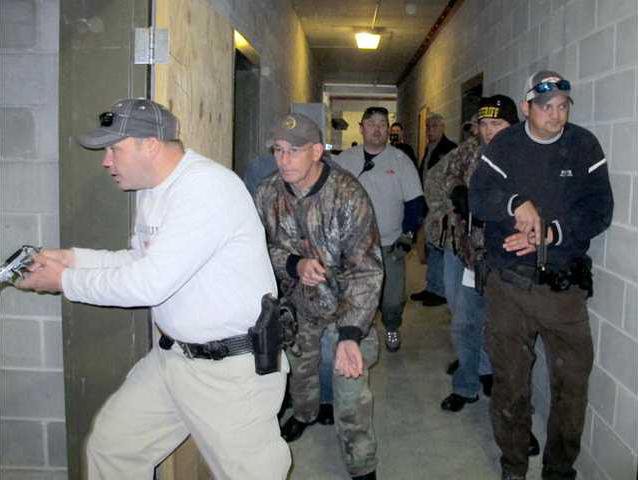Ensuring the safety of public-school students requires a collaborative effort by school personnel and law enforcement, according to Liberty County Sheriff Steve Sikes.
For three days this week, Liberty County School System personnel collaborated with LCSO personnel, including active-shooter response training Thursday on Fort Stewart.
“I had a meeting with (LCSS Superintendent) Dr. (Judy) Scherer two weeks ago,” Sikes said. “We talked about getting our guys there at the schools to become familiar with how the schools are laid out. We also talked about our guys watching how they conduct fire drills and bomb threat drills, so we could see how they get the kids out of the schools. That way, we could work on which plan would best serve our (hazardous-material and active-shooter) scenarios.”
Sikes said collaboration was the main purpose of Thursday’s training at Colmar Village for hazardous-material awareness and training for an active-shooter response. Mary Alexander, assistant superintendent for student services, and Cheryl Conley, deputy superintendent, participated in the training.
Capt. David Edwards and Hinesville Fire Department Public Information Officer Kris Johanson said the hazardous-material training was a refresher for law-enforcement officers but probably was new for the school officials.
Alexander said that morning’s hazmat training particularly was helpful and timely, recalling that a year ago, hazardous material was found in the parking lot at Bradwell Institute. The material, which turned out to be a spoon-size spill of mercury, was contained and removed.
“This afternoon, what we’re doing is active-shooter response,” Edwards said as officers and the BOE’s volunteer “hostages” prepared for the next phase of training. “This site is set up to look like a school. We’re just doing ‘sem-munition’ training, though. We’re not doing any live-fire training.”
During the exercise, Alexander and Conley hid in separate rooms while a simulated active shooter hid in a third room. As the officers moved through a smoke-filled hallway, they received guidance from a detective directing their activity as they entered and cleared each room.
When the shooter stepped into the hallway, he immediately was challenged to drop his weapon and surrender. With some intense negotiations, the shooter was apprehended and the hostages were rescued.
“We have our plans, and we know what we’re doing,” Conley said. “We also know the sheriff’s officers know what they’re doing. What we need to know is what each other is doing. One thing we’d like to have is training at one of the schools without the students but with all the teachers from each school.”
Conley said the school system is proactive about safety but noted there’s always that fear of an incident like the December 2012 shooting at Sandy Hook Elementary in Newtown, Conn.
Sikes said his department will continue to work with the school system to develop a collaborative plan and train both his officers and school personnel.
Sheriff, BoE work on school safety


Sign up for our e-newsletters